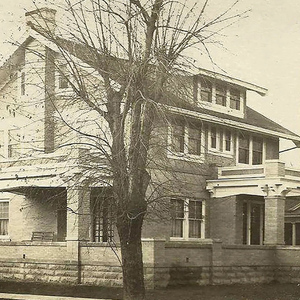*
I want to run an electrical line out to my detached garage. The distance from the end of the house to the garage is about 40 feet, plus about 25 or 30 feet inside the house. The problem is that I have a huge old oak tree, and I do not want to trench through the feeder roots. I can’t go around them and stay on my property (the drip line is about 70 feet in diameter, and my lot is only 45 feet wide).
I have heard of using a “mole” to pull lines underground. I need to be about 36 inches deep, which will easily miss the feeder roots (most are in the 6 to 18 inch deep range). The soil is largely clay in this area of my lot.
Does anyone have any ideas for getting a cable (probably #6 3 wire) underground?
Or should I try to figure out an overhead option?
Thanks!
Bryan



















Replies
*
What does your utility say? They must have experience in this area.
*Bryan, We operate an excavating business where we are digging out huge oak stumps frequently. You are right to be concerned about your oak tree roots because oaks are among the most sensitive trees to root damage. However, what we usually find in a large tree like you have is a huge, dense ball of roots near the trunk with big lateral roots running in all directions but quite deep in the ground. I have a yard full of these things and I've run underground wiring all over the place with a trencher and don't hit anything serious enough to have done any damage to the trees. Maybe your roots are up higher due to heavy soil. You could try a trencher and stay way out on the perimeter going only 6" or so at a time.You could also ask your elecrical inspector what he would O.K. as a minimum depth for wire in rigid conduit.We use the mole method for running wires under roads and it works great if you don't have a lot of big roots all over the place. I would think you would have a problem going that far in your situation.
*Three other possibilities: (really expensive) there are directional horizontal boring machines that have a rotating drill head that squirts cutting fluid (a slurry of clay and water) to one side. By rotating and pushing, they drill straight shead. By locking in at one angle and pushing, they cut a curve path, about 15-20 feet in radius. I've used it to establish a 4-inch conduit 450 feet under a 6-lane thoroughfare. By reaming out the pilot hole, they can make it even bigger. I'd guess it would run $2,000 mostly in the mob, set-up, and demob. Probably overkill.(way cheap) - a friend jetted under his driveway with a garden hose hose-clamped to 15 feet of 1/2 steel pipe. Then pulled through the 3/4 copper flex feeder he wanted to replace the original 1/2 water feed line. For a 40 foot run, you'd have to go from posthole to posthole, but if your back is stronger than your wallet. . .And, lastly, I saw on Hometime or some such a machine to lay in irrigation tubing (is that what others are calling a mole?). A hook at the end of a thin blade grabbed the tubing and pulled/vibrated it through the ground at a depth of 18-24 inches. But those roots would be a problem.Ask your electric company what they do and ask local electrical subs what options they have used. -David
*I wouldn't worry too much about feeder roots. Look out for the large support roots. Oaks are more sensitive to getting their roots covered with additional soil, than a little pruning with the trencher.